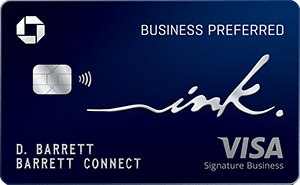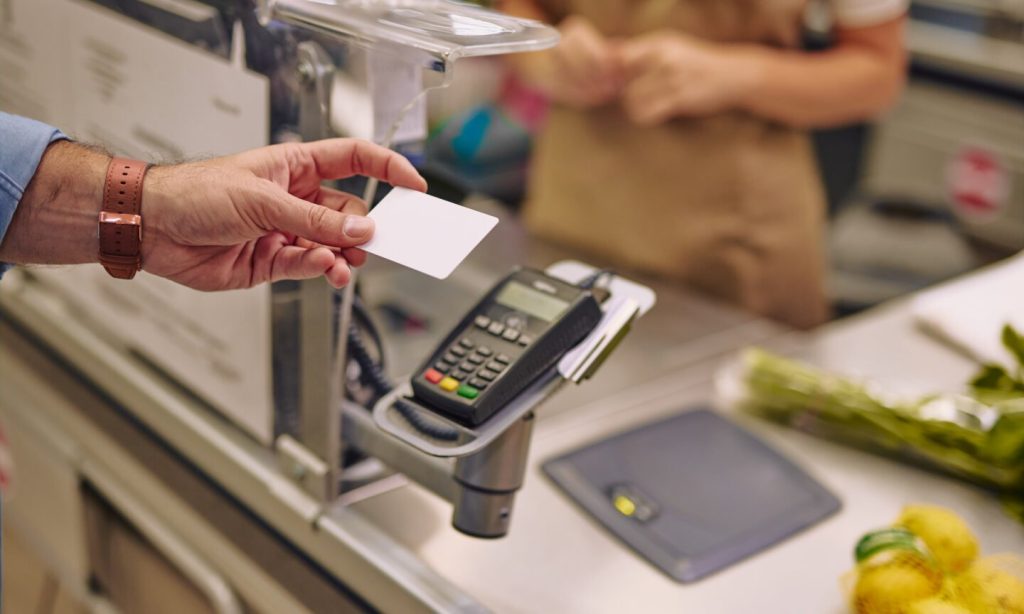A new credit card sign-up bonus offers the easiest way to quickly build your stash of miles and points. To earn a sign-up bonus, you must typically meet a card’s minimum spend requirement — usually between $1,000 and $5,000 — within a few months. Depending on your budget, that can seem like a lot. But over the years, I’ve found some clever spending tricks that have helped me earn a lot of sign-up bonuses. Here are my favorites.
🤓Nerdy Tip
Some of these methods carry fees, which you should typically try to avoid. However, earning a sign-up bonus is one of the few occasions where the rewards you’ll receive for paying a 2% to 3% fee for using a credit card are usually much higher than the fee itself.
1. Put all your purchases on the card
The easiest way to meet a minimum spend requirement is to put every purchase you make on the card, even the little stuff — $5 here and $8 there — can add up over a few months. When I’m hitting a minimum spend requirement, I even take other cards out of my wallet so I don’t accidentally use them. Just be sure you’re only buying things you need and can pay off the balance each month. It’s never worth going into debt or spending frivolously just to earn points and miles.
2. Sign up before a large expense
Another easy way to hit a minimum spend requirement is to sign up for a new card before a large expense. I’ve done this with car repairs, home remodels, an air conditioner replacement and various other large purchases. The cash value of the sign-up bonus you’re earning can effectively decrease the cost of your large expense.
3. Pay rent through Bilt
Bilt is a loyalty program that lets renters pay their monthly rent with any credit card for a 3% transaction fee. This can be a great way to earn a sign-up bonus, since the slug of rewards you’ll earn are worth more than that 3% fee. You’ll also earn Bilt Rewards in addition to the everyday rewards from spending on your credit card.
4. Prepay your utility or cell phone bill
Some utilities and telecom providers allow you to prepay or overpay your bill. If you’re coming up short of your minimum spend requirement and are near the end of your qualification period, overpayment can be a good way to make an advance payment for something you’ll eventually pay for anyway. I’ve done this with AT&T, my electrical utility provider, my local water utility and streaming services. But keep in mind that some utilities put a cap on the amount you can prepay or overpay.
5. Pay medical expenses and get reimbursed from an HSA or FSA
Pay for qualifying medical expenses with a credit card and reimburse yourself from a health savings account (HSA) or health care flexible spending account (FSA). This is one of the easiest ways to generate credit card spending without paying any fees. I did this a few years ago when I got LASIK surgery to correct my vision and earned a sign-up bonus on the Chase Sapphire Preferred® Card with only one transaction!
6. Get reimbursed for work expenses
I used to work as a traveling consultant, and every day away from home meant more expenses I could charge on a new card and then submit for reimbursement. I would even sign up for a new hotel card every time I’d hit the road so I could earn more rewards with different hotel chains. But it doesn’t stop at work travel — any expense you can pay and later get reimbursed for can help you toward a minimum spend requirement.
7. Pay your federal taxes
One of my favorite ways to knock out large minimum spend requirements is by paying federal taxes. You can pay these by credit card through the Internal Revenue Service’s third-party payment processors. Although there’s a transaction fee of up to 1.85%, the rewards you receive from the sign-up bonus should be much greater than that.
This strategy can be especially useful if you earn 1099 income and make quarterly estimated payments. Any amount you pay beyond what you owe will be refunded after you file taxes each year.
8. Pay property taxes and homeowners insurance
If you’re buying or refinancing a home, you can choose to decline escrow and pay your property taxes and insurance out of pocket. This method is only recommended for people who are strict with budgeting and able to save enough throughout the year to make the lump sum payments when they are due.
My property taxes and insurance amount to over $10,000 each year, so this method alone lets me hit a few minimum spend requirements each year and pile up travel rewards faster. Before you decide to waive escrow, be sure to check with your lender and see if that will impact your interest rate. Also, check with your local municipality to see if they charge a fee for paying property taxes with a credit card.
🤓Nerdy Tip
Because escrow requirements are part of your mortgage contract, you can typically only choose to waive escrow and pay taxes and insurance out-of-pocket during the home purchase or refinance process. If you have an established mortgage, you probably won’t be eligible.
9. Pay other insurance premiums
If you pay any form of insurance out of pocket, chances are you can pay your premium without incurring a fee. Every six months, I pay the premiums for my auto and umbrella policies with a credit card, and I usually use a new card that allows me to work my way toward a minimum spend requirement.
10. Use a bill-pay service like Plastiq

If you incur a large expense with a contractor or vendor that doesn’t accept cards, consider paying with a credit card through a third-party bill-pay service like Plastiq. You’ll pay a 2.9% fee for using a credit card, and Plastiq (or another bill-pay service) will send the merchant a check.
A few years ago, I was looking to purchase a vehicle for my small business with cash, but the dealer didn’t accept credit cards. Instead, I financed the vehicle and used my new Ink Business Preferred® Credit Card to immediately pay off the loan through Plastiq. I paid around $500 in fees for using Plastiq, but between the sign-up bonus and points earned for using the card, I received around 120,000 Chase Ultimate Rewards® points. I transferred those points from Chase to Hyatt and was able to get 2 cents in value per point, meaning I paid $500 for over $2,400 worth of redemption value.
11. Cover group expenses
If you’re in a social situation with friends or family, offer to pick up the bill and have them reimburse you with cash or through an app like Venmo. Group tabs can be pricey, so this is an easy way to make progress toward your minimum spend requirement. Some purchases — such as those made at restaurants — might even earn bonus rewards. Just be sure the people you’re with will actually pay you back!
12. Buy gift cards (with caution)
If you still have a bit of spending to do, you can buy third-party gift cards from retailers where you regularly shop (like gas stations, grocery stores or restaurants). But be sure to only do this if it’s money you’d be spending later anyway.
Many card issuers allow gift card purchases to count toward the initial spending threshold, but some issuers, like American Express, explicitly do not — so check terms and conditions carefully before relying on this method.
Reminders for meeting a travel card’s minimum spend
Remember that travel cards with the biggest rewards typically come with annual fees, and there’s always a higher interest rate to worry about. So be careful about charging large amounts to your new card if you can’t pay off the balance in full each month. Interest charges can quickly strip any value you’ll receive from points and miles. However, if you know you can spend responsibly, then get creative, time your application right and use your new card for everything — you’ll meet the minimum spend requirement in no time.

